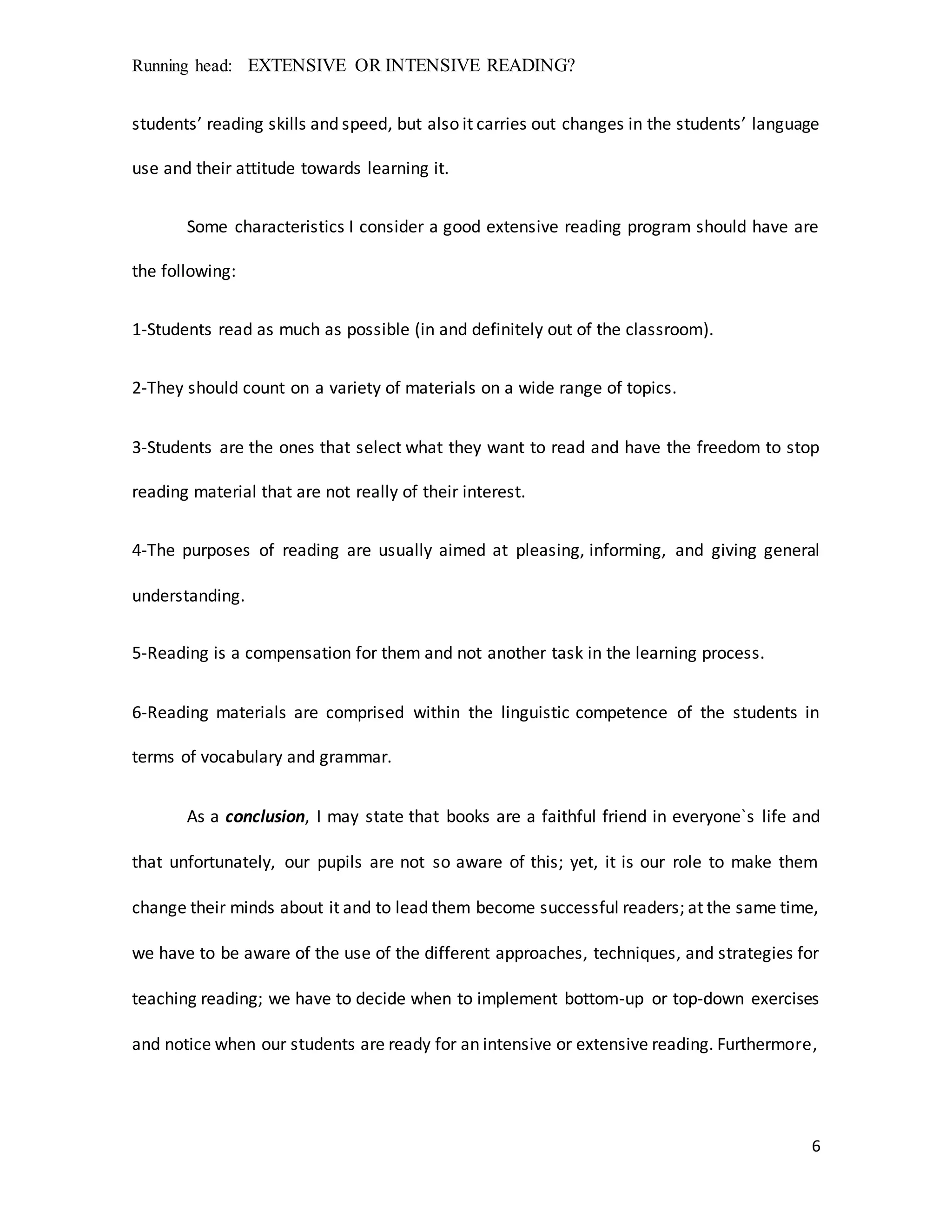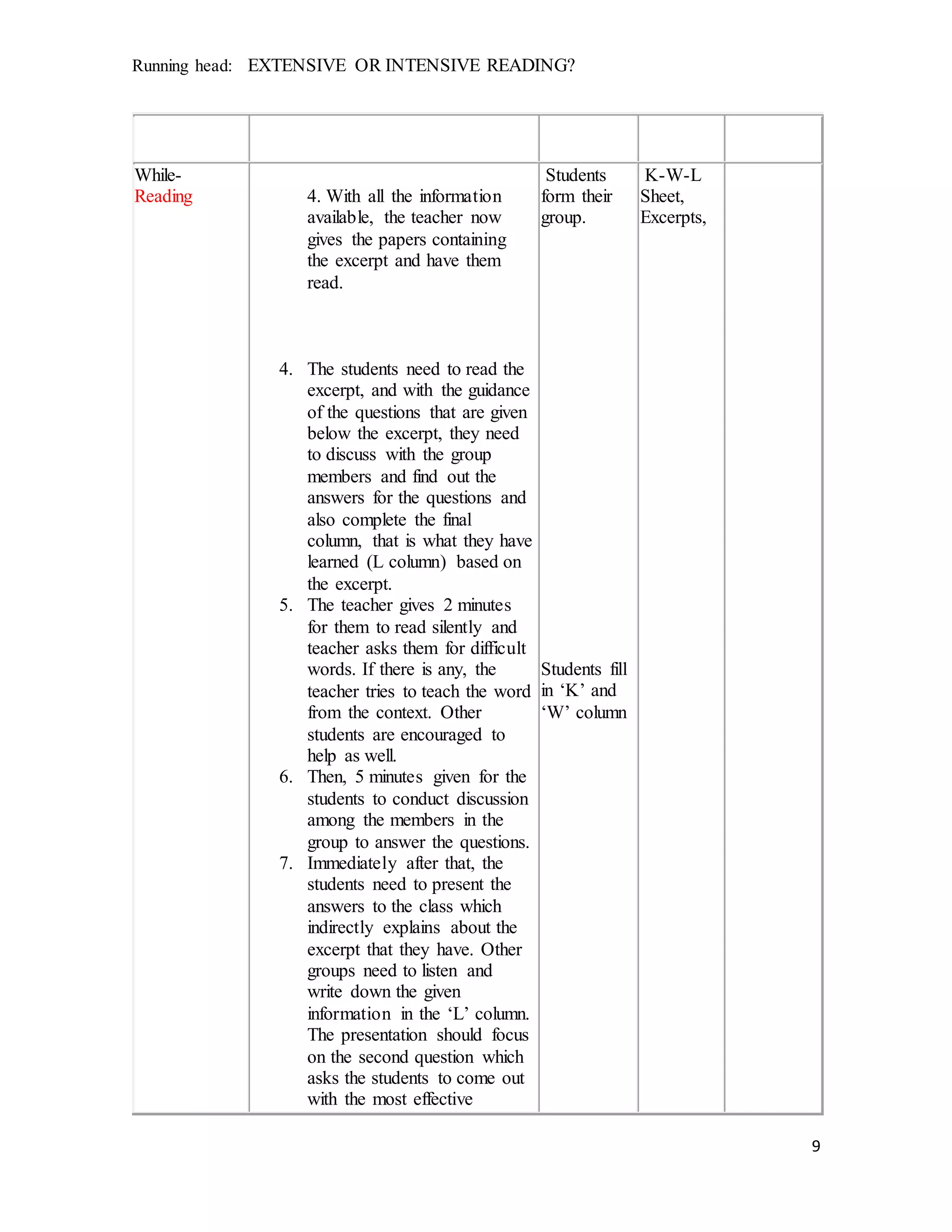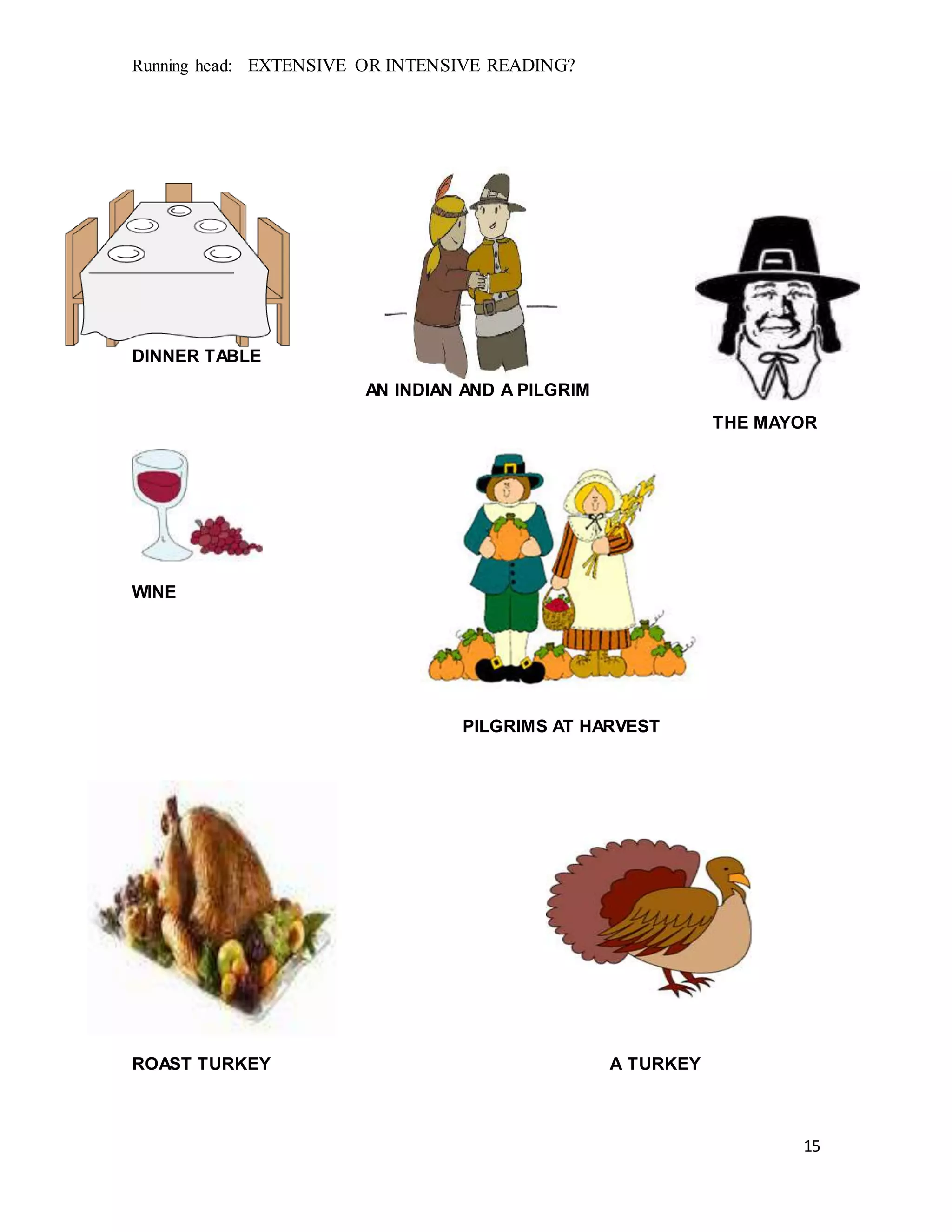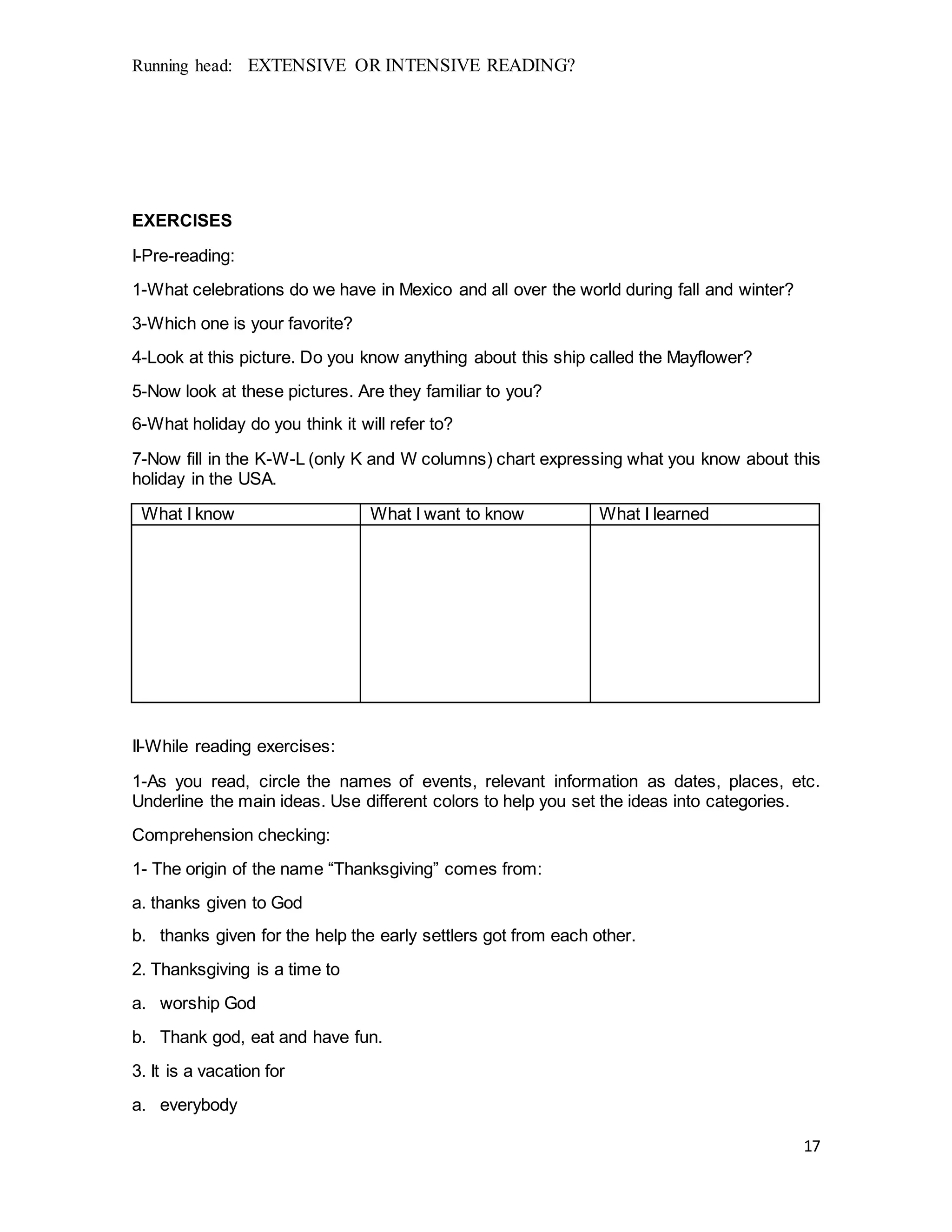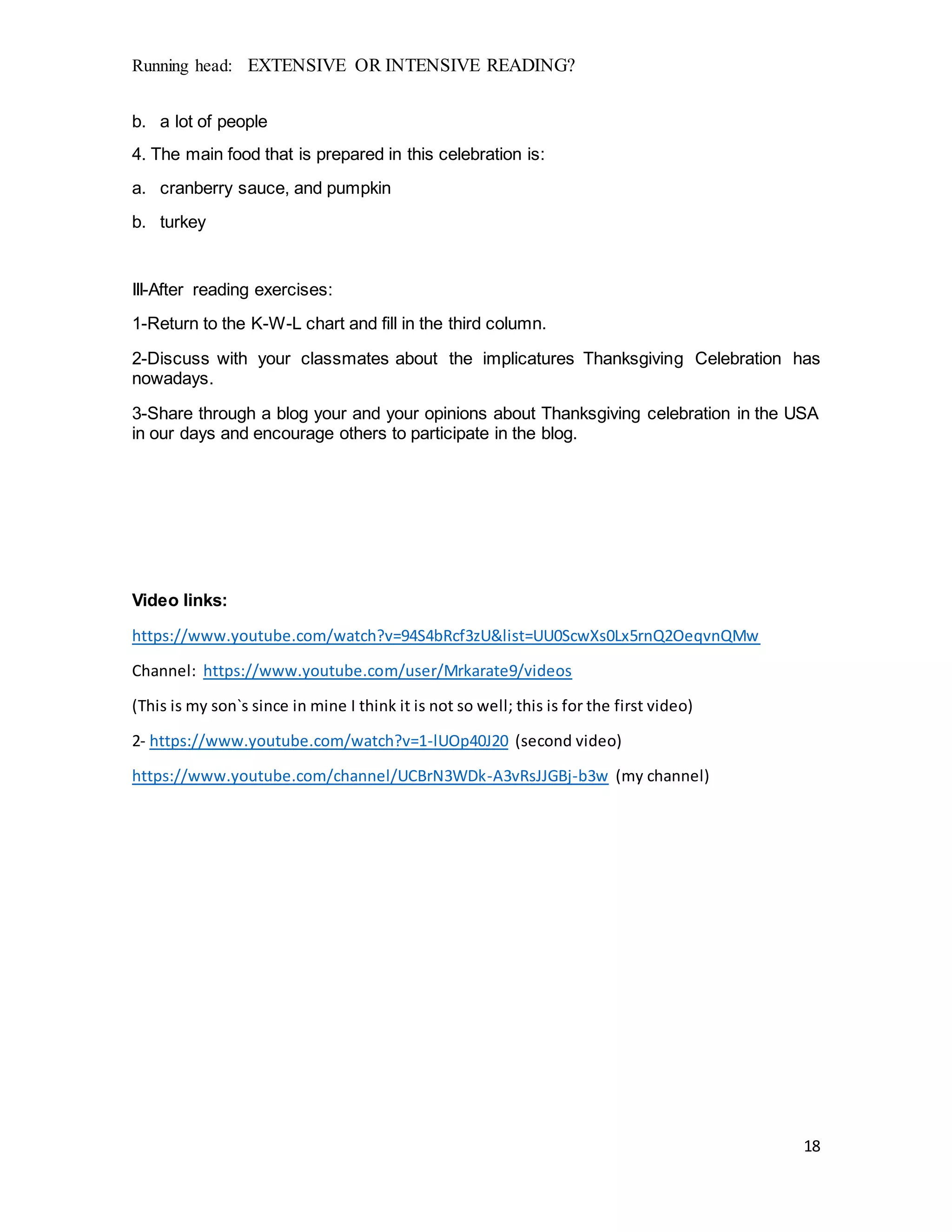This document discusses the teaching of intensive and extensive reading. It begins with an abstract that notes the author's perspective on how reading is taught and how students engage with it. The author believes reading is important for acquiring knowledge and that teachers must model reading engagement. The document then discusses intensive reading, which focuses on close analysis of short texts, and extensive reading, where students choose their own materials. The author argues both approaches are useful but that extensive reading allows more student autonomy. In conclusion, the author states that reading is important for students' development and that teachers must use a variety of strategies to help students become successful readers.





